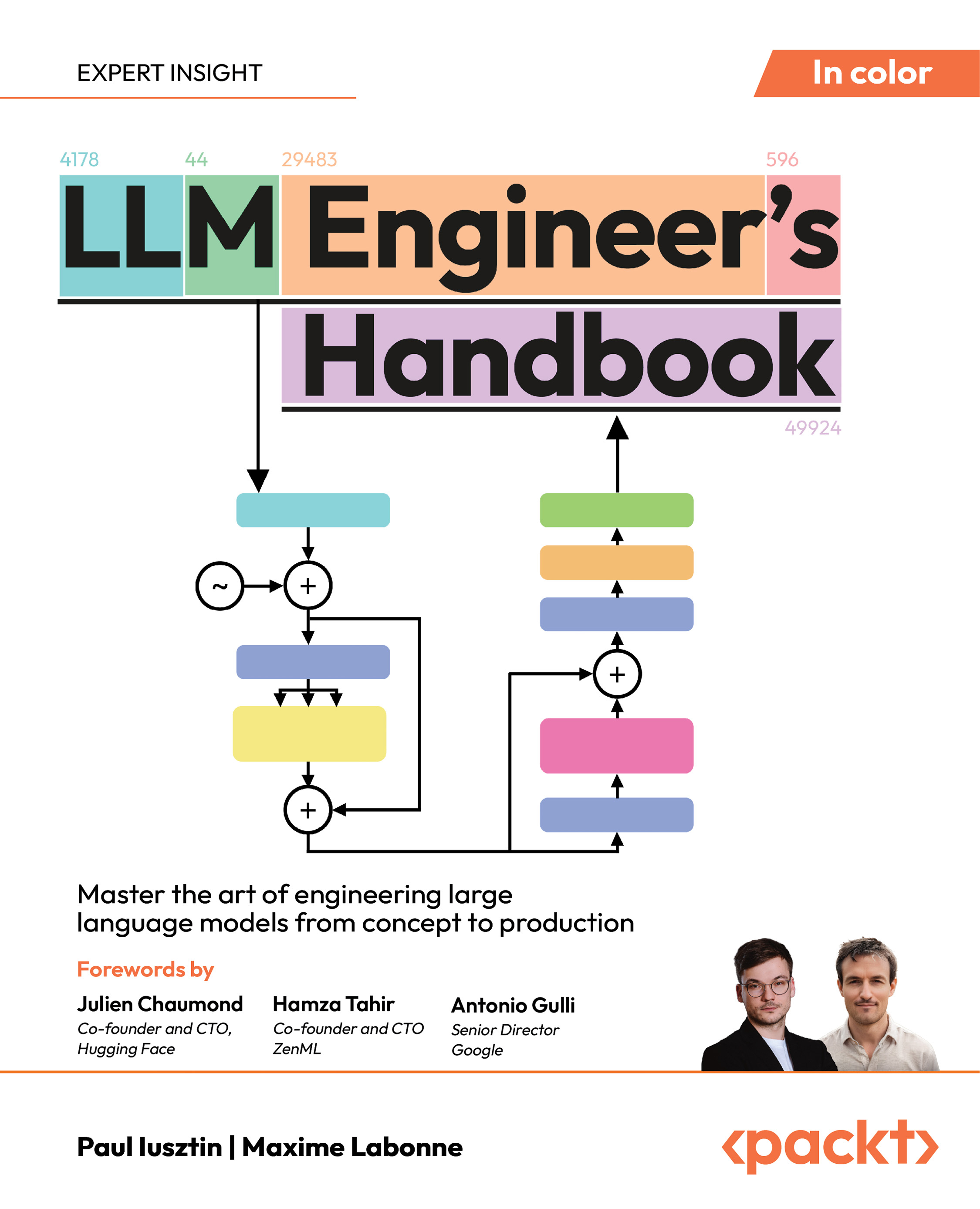In this article by Rishabh Sharma and Mitesh Soni, author of the book Learning Chef, before moving to the details of different Chef components and other practical things, it is recommended that you know the foundation of automation and some of the existing automation tools. This article will provide you with a conceptual understanding of automation, and a comparative analysis of Chef with the existing automation tools.
(For more resources related to this topic, see here.)
In this article, we will cover the following topics:
- An overview of automation
- The need for automation
- A brief introduction of Chef
- The salient features of Chef
Automation
Automation is the process of automating operations that control, regulate, and administrate machines, disparate systems, or software with little or no human intervention. In simple English, automation means automatic processing with "little or no human involvement.
An automated system is expected to perform a function more reliably, efficiently, and accurately than a human operator. The automated machine performs a function at a lower cost with higher efficiency than a human operator, thereby, automation is becoming more and more widespread across various service industries as well as in the IT and software industry.
Automation basically helps a business in the following ways:
- It helps to reduce the complexities of processes and sequential steps
- It helps to reduce the possibilities of human error in repeatable tasks
- It helps to consistently and predictably improve the performance of a system
- It helps customers to focus on business rather than how to manage complexities of their system; hence, it increases the productivity and "scope of innovation in a business
- It improves robustness, agility of application deployment in different environments, and reduces the time to market an application
Automation has already helped to solve various engineering problems such as information gathering, preparation of automatic bills, and reports; with the help "of automation, we get high-quality products and products that save cost.
IT operations are very much dependent on automation. A high degree of automation in IT operations results in a reduced need for manual work, improved quality of service, and productivity.
Why automation is needed
Automation has been serving different types of industries such as agriculture, food and drink, and so on for many years, and its usage is well known; here, we will concentrate on automation related to the information technology (IT) service and software industry.
Escalation of innovation in information technology has created tremendous opportunities for unbelievable growth in large organizations and small- and medium-sized businesses. IT automation is the process of automated integration and management of multifaceted compute resources, middleware, enterprise applications, and services based on workflow. Obviously, large organizations with gigantic profits can afford costly IT resources, manpower, and sophisticated management tools, while for small- and medium-scale organizations, it is not feasible. In addition to this, huge investments are at stake in all resources and most of the time, this resource management is a manual process, which is prone to errors. Hence, automation in the IT industry can be proved as a boon considering that it has repeatable and error-prone tasks. Let's drill down the reasons for the need of automation in more detail:
- Agile methodology: An agile approach to develop an application results in the frequent deployment of a process. Multiple deployments in a short interval involve a lot of manual effort and repeatable activities.
- Continuous delivery: Large number of application releases within a short span of time due to an agile approach of business units or organizations require speedy and frequent deployment in a production environment. Development of a delivery process involves development and operation teams that have different responsibilities for proper delivery of the outcome.
- Non-effective transition between development and production environment: In a traditional environment, transition of a latest application build from development to production lasts over weeks. Execution steps taken to do this are manual, and hence, it is likely that they will create problems. The complete process is extremely inefficient. It becomes an exhaustive process with a lot of manual effort involved.
- Inefficient communication and collaboration between teams: Priorities of development and IT operations teams are different in different organizations. A development team is focused on the latest development releases and considers new feature development, fixing the existing bugs, or development of innovative concepts; while an operations team cares about the stability of a production environment. Often, the first deployment takes place in a production-like environment when a development team completes its part. An operations team manages the deployment environment for the application independently, and there is hardly any interaction between both the teams. More often than not, ineffective or virtually, no collaboration and communication between the teams causes many problems in the transition of application package from the deployment environment to the production environment because of the different roles and responsibilities of the respective teams.
- Cloud computing: The surfacing of cloud computing in the last decade has changed the perspective of the business stakeholders. Organizations are attempting to develop and deploy cloud-based applications to keep up their pace with the current market and technology trends. Cloud computing helps to manage a complex IT infrastructure that includes physical, consolidated, virtualized, and cloud resources, as well as it helps to manage the constant pressure to reduce costs. Infrastructure as a code is an innovative concept that models the infrastructure as a code to pool resources in an abstract manner with seamless operations to provision and deprovision for the infrastructure in a flexible environment of the cloud. Hence, we can consider that the infrastructure is redeployable using configuration management tools. Such an unimaginable agility in resources has provided us with the best platform to develop innovative applications with an agile methodology rather than the slow and linear waterfall of the Software Development Life Cycle (SDLC) model.
Automation brings the following benefits to the IT industry by addressing "preceding concerns:
- Agility: It provides promptness and agility to your IT infrastructure. Productivity and flexibility is the significant advantage of automation, which helps us to compete with the current agile economic condition.
- Scalability: Using automation, we can manage the complications of the infrastructure and leverage the scalability of resources in order to fulfill our customers demand. It helps to transform infrastructure into a simple code, which means that building, rebuilding, configuring, and scaling of the infrastructure is possible in just a few minutes according to the need of the customers in a real-world environment.
- Efficiency and consistency: It can handle all the repeated tasks very easily, so that you can concentrate on innovative business. It increases the agility and efficiency of managing a deployment environment and application deployment itself.
- Effective management of resources: It helps to maintain a model of infrastructure which must be consistent. It provides a code-based design framework that leads us to a flexible and manageable way to know all the fundamentals of the complex network.
- Deployment accuracy: Application development and delivery is a multifaceted, cumbersome, repetitive, and time-bound endeavor. Using automation, testability of a deployment environment and the enforcing discipline of an accurate scripting of the changes needs to be done to an environment, and the repeatability of those changes can be done very quickly.
We have covered DevOps-related aspects in the previous section, where we discussed the need for automation and its benefits. Let's understand it in a more precise manner. Recently, the DevOps culture has become very popular. A DevOps-based application development can handle quick changes, frequent releases, fix bugs and continuous delivery-related issues in the entire SDLC process. In simple English, we can say that DevOps is a blend of the tasks undertaken by the development and operation teams to make application delivery faster and more effective. DevOps (includes coding, testing, continuous integration of applications, and version releases) and various IT operations (includes change, incident, problem management, escalation, and monitoring,) can work together in a highly collaborative environment. It means that there must be a strong collaboration, integration, and communication between software developers and IT operations team.
The following figure shows you the applied view of DevOps, and how a development and an operations team collaborate with each other with the help of different types of tools. For different kinds of operations such as configuration management and deployment, both Chef and Puppet are being used. DevOps also shows how cloud management tools such as Dell Cloud Manager, formerly known as Enstratius, RightScale, and Scalr can be used to manage cloud resources for development and operations activities:

DevOps is not a technology or a product, but it is a combination of culture, people, process, and technology. Everyone who is involved in the software development process, including managers, works together and collaboratively on all the aspects of a project. DevOps represents an important opportunity for organizations to stay ahead of their competition by building better applications and services, thus opening the door for increased revenue and improved customer experiences. DevOps is the solution for the problems that arise from the interdependence of IT operations and software development.
There are various benefits of DevOps:
- DevOps targets application delivery, new feature development, bug fixing, testing, and maintenance of new releases
- It provides stable operating environments similar to an actual deployment environment and hence, results in less errors or unknown scenarios
- It supports an effective application release management process by providing better control over the distributed development efforts, and by regulating development and deployment environments
- It provides continuous delivery of applications and hence provides faster solutions to problems
- It provides faster development and delivery cycles, which help us to increase our response to customer feedback in a timely manner and enhance customer experience and loyalty
- It improves efficiency, security, reliability, predictability of outcome, and faster development and deployment cycles
In the following figure, we can see all the necessities that are based on the development of DevOps. In order to serve most of the necessities of DevOps, we need a tool for configuration management, such as Chef:

Unlock access to the largest independent learning library in Tech for FREE!
Get unlimited access to 7500+ expert-authored eBooks and video courses covering every tech area you can think of.
Renews at $19.99/month. Cancel anytime
In order to support DevOps-based application development and delivery approach, infrastructure automation is mandatory, considering extreme need of agility. The entire infrastructure and platform layer should be configurable in the form of code or a script. These scripts will manage to install operating systems, install and configure servers on different instances or on virtual machines, and these scripts will manage to install and configure the required software and services on particular machines.
Hence, it is an opportunistic time for organizations that need to deliver innovative business value in terms of services or offerings in the form of working outcome – deployment ready applications.
With an automation script, same configuration can be applied to a single server or thousands of identical servers simultaneously. Thereby, it can handle error-prone manual tasks more efficiently without any intervention, and manage horizontal scalability efficiently and easily.
In the past few years, several open-source commercial tools have emerged for infrastructure automation, in which, Bcfg2, Cobbler, CFEngine, Puppet, and Chef are the most popular. These automation tools can be used to manage all types of infrastructure environments such as physical or virtual machines, or clouds. Our objective is to understand Chef in detail, and hence, we will look at the overview of the Chef tool in the next section.
Introduction to Chef
Chef is an open source configuration management tool developed by the Opscode community in 2008. They launched its first edition in January 2009. Opscode is run by individuals from the data center teams of Amazon and Microsoft. Chef supports a variety of operating systems; it typically runs on Linux, but supports Windows 7 and Windows Server too. Chef is written in Ruby and Erlang, both are real-time programming languages.
The Chef server, workstation, and nodes are the three major components of Chef. The Chef server stores data to configure and manage nodes effectively. A Chef workstation works as a local Chef repository. Knife is installed on a workstation. Knife is used to upload cookbooks to a Chef server. Cookbook is a collection of recipes. Recipes execute actions that are meant to be automated. A node communicates with a Chef server and gets the configuration data related to it and executes it to install packages or to perform any other operations for configuration management .

Most of the outages that impact the core services of business organizations are caused by human errors during configuration changes and release management. Chef helps software developers and engineers to manage server and application configurations, and provides for hardware or virtual resources by writing code rather than running commands manually. Hence, it is possible to apply best practices of coding and design patterns to automate infrastructure. Chef was developed to handle most critical infrastructure challenges in the current scenario; it makes deployment of server and applications to any physical, virtual, or cloud instances easy. Chef transforms infrastructure to code.
Considering virtual machines in a cloud environment, we can easily visualize the possibility of keeping versions of infrastructure and its configurations and creating infrastructure repeatedly and proficiently. Additionally, Chef also supports system administration, network management, and continuous delivery of an application.
The salient features of Chef
Based on comparative analysis with Chef's competitors, the following are the salient features of Chef, which make it an outstanding and the most popular choice among developers in the current IT infrastructure automation scenario:
- Chef has different flavors of automated solutions for current IT operations such as Open Source Chef, Hosted Chef, and Private Chef.
- Chef enables the highly scalable, secure, and fault-tolerant automation capability features of your infrastructure.
- Every flavor has a specific solution to handle different kinds of infrastructure needs. For example, the Open Source Chef server is freely available for all, but supports limited features, while the Hosted Chef server is managed by Opscode as a service with subscription fees for standard and premium support. The Private Chef server provides an on-premise automated solution with a subscription price and licensing plans.
- Chef has given us flexibility. According to the current industry use cases, we can choose among Open Source, Hosted, and Private Chef server as per our requirement.
- Chef has the facility to integrate with third-party tools such as Test Kitchen, Vagrant, and Foodcritic. These integrations help developers to test Chef scripts and perform proof of concept (POC) before deploying an actual automation. These tools are very useful to learn and test Chef scripting.
- Chef has a very strong community. The website, https://www.chef.io/ can help you get started with Chef and publish things. Opscode has hosted numerous webinars, it publishes training material, and makes it very easy for developers to contribute to new patches and releases.
- Chef can quickly handle all types of traditional dependencies and manual processes of the entire network.
- Chef has a strong dependency management approach, which means that only the sequence of order matters, and all dependencies would be met if they are specified in the proper order.
- Chef is well suited for cloud instances, and it is the first choice of developers who are associated with cloud infrastructure automation. Therefore, demand for Chef automation is growing exponentially. Within a short span of time, Chef has acquired a good market reputation and reliability.
In the following figure, we can see the key features of Chef automation, which make it the most popular choice of developers in the current industry scenario:

Summary
Here, we got the fundamental understanding of automation and the various ways in which automation helps the IT industry. DevOps is most popular nowadays, because it brings a highly collaborative environment in the entire software development process.
We got an overview of several traditional and advance automation tools, which have been used over the past 15 years. We got a clear idea why Chef is needed in the current scenario of IT automation process and why it is more preferable.
We saw the evolution of various IT automation tools and the comparison of some advance automation tools. We also discussed the salient features of Chef.
Resources for Article:
Further resources on this subject:
 United States
United States
 Great Britain
Great Britain
 India
India
 Germany
Germany
 France
France
 Canada
Canada
 Russia
Russia
 Spain
Spain
 Brazil
Brazil
 Australia
Australia
 Singapore
Singapore
 Canary Islands
Canary Islands
 Hungary
Hungary
 Ukraine
Ukraine
 Luxembourg
Luxembourg
 Estonia
Estonia
 Lithuania
Lithuania
 South Korea
South Korea
 Turkey
Turkey
 Switzerland
Switzerland
 Colombia
Colombia
 Taiwan
Taiwan
 Chile
Chile
 Norway
Norway
 Ecuador
Ecuador
 Indonesia
Indonesia
 New Zealand
New Zealand
 Cyprus
Cyprus
 Denmark
Denmark
 Finland
Finland
 Poland
Poland
 Malta
Malta
 Czechia
Czechia
 Austria
Austria
 Sweden
Sweden
 Italy
Italy
 Egypt
Egypt
 Belgium
Belgium
 Portugal
Portugal
 Slovenia
Slovenia
 Ireland
Ireland
 Romania
Romania
 Greece
Greece
 Argentina
Argentina
 Netherlands
Netherlands
 Bulgaria
Bulgaria
 Latvia
Latvia
 South Africa
South Africa
 Malaysia
Malaysia
 Japan
Japan
 Slovakia
Slovakia
 Philippines
Philippines
 Mexico
Mexico
 Thailand
Thailand


















